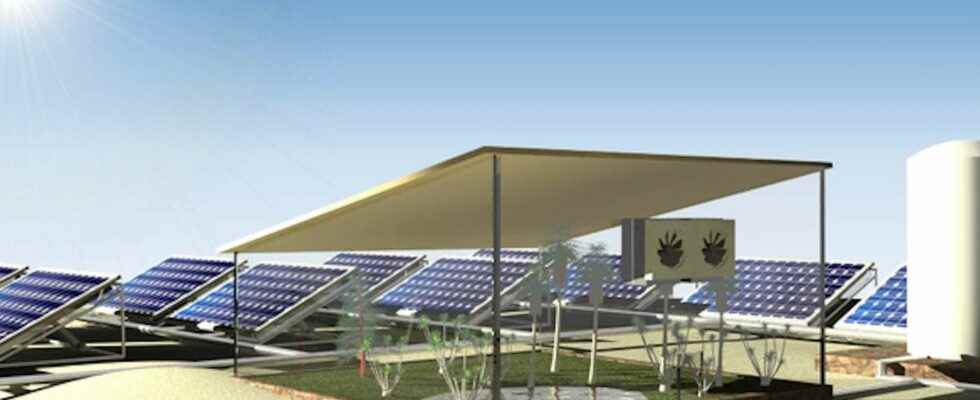You will also be interested
[EN VIDÉO] What is photovoltaic energy? Photovoltaic energy, everyone talks about it and some of us may even benefit from it. But do we really know what is at stake in the heart of a solar cell? Marion Perrin, doctor in electrochemistry, presents to us, in video, the physical principle behind this renewable energy.
A large metal box covered with solar panels lined with a layer ofhydro gel. This is what the system invented by researchers from King Abdullah University of Science and Technology (Kaust), in Saudi Arabia, to grow spinach in the middle of the desert, while producing electricity.
How it works ? The role of the hydrogel layer – polyacrylamide-calcium chloride (PAM-CaCl2) whose properties researchers have studied in the past – is first to absorb the water vapour of the’air ambient. Then, heated by the heat residual from the solar panels, this hydrogel releases the steam to the metal box located below and intended to condense it into water. All while the hydrogel also increases the efficiency of solar panels by 9% in producing electricity by controlling their temperature.
Improve hydrogel performance
In a two-week test of a particularly hot month of June, researchers irrigated 60 spinach seeds aquatics with the only water collected through a desktop-sized prototype of their system. In total, about two liters. The system generated 1,519 watt hours of electricity and 57 of the seeds grew up to 18 centimeters.
To move from the proof-of-concept stage to that of a system that can actually be used in the field, however, the researchers will have to develop a hydrogel capable of absorbing more water from the air. But they seem on the right track to propose a system that would ensure a supply of both electricity and water, particularly to populations living in rural areas and in arid or semi-arid climates.
Interested in what you just read?
